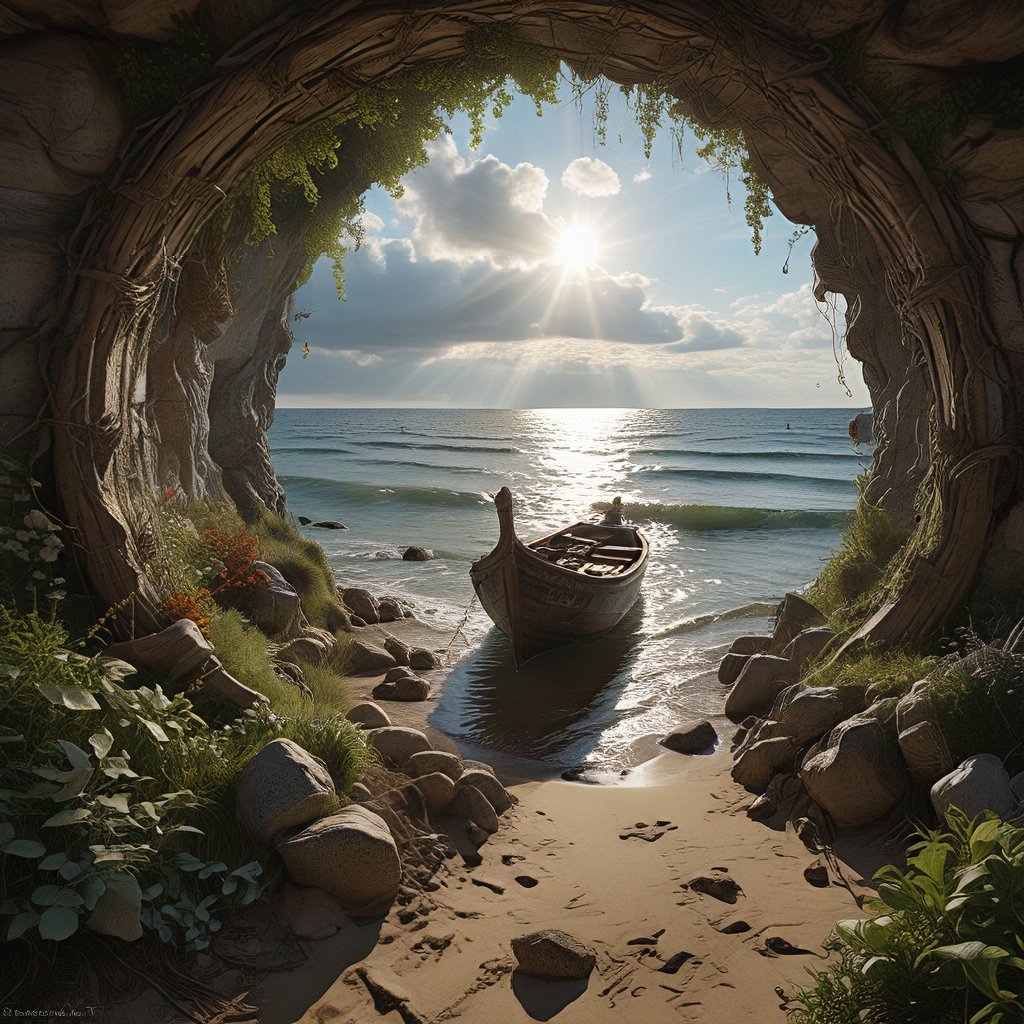The Well of Urd: The Fountain of Fate and the Source of Yggdrasil’s Power
I. Introduction
Norse mythology is a rich tapestry of stories and symbols that explore the nature of existence, fate, and the cosmos. It features a pantheon of gods, goddesses, and mythical beings, each playing a distinct role in the grand design of the universe. Among the many significant elements within this mythology is the Well of Urd, a mystical source of water that holds deep connections to fate and destiny.
The Well of Urd is not merely a physical location but a profound symbol of the interconnectedness of life, fate, and the universe’s fabric. Located at the roots of Yggdrasil, the World Tree, it is integral to the understanding of how fate operates within the realm of Norse beliefs. This article delves into the significance of the Well of Urd and its relationship with Yggdrasil, exploring the mythological and cultural dimensions of this sacred site.
II. The Well of Urd: A Mythological Overview
A. Description of the Well
The Well of Urd, known as Urdarbrunnr in Old Norse, is described as a deep and mystical well that flows with clear, life-affirming waters. It is often depicted as a place of contemplation and wisdom, where the threads of fate are woven and the past, present, and future converge.
B. Location and significance in the Nine Realms
This well is situated at the base of Yggdrasil, the immense and central tree of Norse cosmology, which connects the Nine Realms of existence. Its significance cannot be overstated, as it serves as a meeting point for the Norns, who govern fate, and as a source of sustenance for Yggdrasil itself.
C. The connection to the Norns and fate
The Well of Urd is intrinsically linked with the Norns, the three female entities who control the destinies of gods and men alike. They draw water from the well to nourish Yggdrasil and use its waters to weave the fates of all beings, ensuring that the cycle of life continues in accordance with the cosmic order.
III. The Norns: Guardians of Fate
A. Introduction to the Norns
The Norns are often depicted as three sisters: Urd (the past), Verdandi (the present), and Skuld (the future). Each represents a different aspect of time and destiny, working together to weave the tapestry of life. They are seen as both benevolent and stern, reflecting the dual nature of fate.
B. Their roles in shaping destiny
The Norns shape the destinies of all beings by spinning, measuring, and cutting the threads of life. Their decisions are final, and even the gods are subject to their will. This underscores the belief in an unavoidable fate that governs existence.
C. The relationship between the Norns and the Well of Urd
The Norns regularly visit the Well of Urd to draw its waters, which are believed to contain the wisdom of the ages. This water is essential for the sustenance of Yggdrasil and, symbolically, for the continuation of all life. The Norns’ connection to the well highlights their role as intermediaries between the divine and the mortal realms.
IV. Yggdrasil: The Cosmic Tree
A. Description of Yggdrasil and its significance
Yggdrasil is often depicted as a giant ash tree that stands at the center of the universe, its branches stretching into the heavens and its roots delving deep into the underworld. This tree is a symbol of life, death, and rebirth, representing the interconnectedness of all beings.
B. The connection between Yggdrasil and the Well of Urd
Yggdrasil and the Well of Urd are deeply intertwined; the well nourishes the tree, allowing it to flourish and serve as the axis mundi of the cosmos. Its roots spread through various realms, including Hel, the realm of the dead, further emphasizing the tree’s role in the cycle of life and death.
C. How the Well nourishes and empowers Yggdrasil
The waters of the Well of Urd are believed to confer strength and vitality to Yggdrasil, allowing it to endure the trials of time. The well not only sustains the tree physically but also spiritually, as it is the source of wisdom that fuels the Norns’ decisions regarding destiny.
V. The Flow of Fate: Knowledge and Wisdom from the Well
A. The well as a source of knowledge
The Well of Urd is often regarded as a source of profound knowledge and insight. Those who seek wisdom may find it within its depths, as the waters reflect the truths of existence and the nature of fate.
B. The significance of water from the Well of Urd
The water from the Well of Urd is imbued with magical properties. It is said to grant wisdom, foresight, and understanding, making it a coveted resource for gods and mortals alike. Drinking from the well is seen as a way to gain insight into one’s destiny.
C. Myths and stories illustrating its power
- The tale of Odin sacrificing himself on Yggdrasil to gain knowledge of the runes, where the connection to the well plays a crucial role.
- The story of how the Norns use the water to weave the fates of heroes and gods, highlighting the well’s importance in shaping destinies.
- Legends of mortals who sought the well’s wisdom, only to confront the harsh realities of their fates.
VI. Symbolism of the Well of Urd in Norse Culture
A. The Well’s representation of fate and time
The Well of Urd symbolizes the cyclical nature of fate and time, illustrating how the past, present, and future are interconnected. It serves as a reminder that every action has consequences and that the threads of life are intricately woven together.
B. The role of the Well in rituals and beliefs
In Norse culture, the Well of Urd was likely a focal point in various rituals and ceremonies aimed at seeking guidance or understanding one’s fate. It represents the quest for knowledge and the acceptance of fate as a guiding principle in life.
C. Modern interpretations and cultural relevance
Today, the Well of Urd continues to resonate within popular culture and modern interpretations of Norse mythology. It serves as a symbol of the wisdom that comes from understanding one’s place in the universe and the acceptance of fate’s flow.
VII. Comparisons to Other Mythological Wells and Fountains
A. Similarities with wells and fountains in other mythologies
Across various cultures, sacred wells and fountains often symbolize wisdom, healing, and the flow of life. For example, the Fountain of Youth in folklore represents the desire for eternal life, while the Pool of Bethesda in Christian tradition symbolizes healing and renewal.
B. The archetype of the sacred well in global lore
The archetype of the sacred well is prevalent in global mythologies, often serving as a meeting place between the mortal and divine, a source of mystical knowledge, or a symbol of the cycle of life. These wells frequently embody the themes of rebirth and transformation.
C. The unique aspects of the Well of Urd
What sets the Well of Urd apart is its direct connection to the concept of fate and the Norns. Unlike many other wells, which may focus on healing or immortality, the Well of Urd emphasizes the acceptance of one’s destiny and the wisdom derived from understanding the interconnectedness of all things.
VIII. Conclusion
A. Recap of the Well of Urd’s significance
The Well of Urd stands as a powerful symbol within Norse mythology, representing the flow of fate, the interconnectedness of life, and the wisdom that comes from understanding one’s place in the cosmos. Its relationship with Yggdrasil and the Norns highlights its critical role in shaping the destinies of gods and mortals alike.
B. The enduring legacy of the Well in modern culture
Even in modern times, the Well of Urd continues to inspire and resonate, serving as a metaphor for the quest for knowledge, acceptance of fate, and the search for meaning in life. Its archetype



